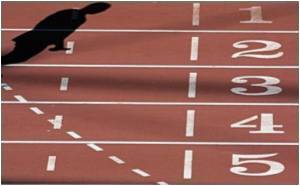
‘40-50 percent of tennis players have faced this problem during the course of their career. Minimizing all activities that instigate pain in the elbow can prevent Tennis Elbow.’
Tweet it Now
Dr Anil Arora, Head of Unit and Lead Consultant, Department of Orthopaedics, Max Super Speciality Hospital, Parparganj, Delhi) explains the problem in detail. What is Tennis Elbow? The condition is characterized by an injury to the muscles & tendon area around the elbow especially the outer bony area attached to the muscles of the forearm. In medical terms, it is also called as 'lateral epicondylitis' or 'medial epicondylitis' depending upon the location of the problem.
The problem is related to the degenerative changes rather than any kind of inflammation. These muscles allow you to extend your wrist & in case of an injured elbow, the person is unable to move their hand freely.
According to researchers, Tennis elbow is more likely to occur 14-41 percent times in players and athletes. Approximately 40-50 percent of the Tennis players have faced the issue of Tennis elbow during the course of their career. However, people with an active lifestyle and gym-goers might develop Tennis elbow because of overuse of muscles around the elbow.
Who are vulnerable to Tennis Elbow? Dr. Anil explains "The condition is common among people who are engaged in activities that require repetitive arm, elbow or hand movement or rotation. Athletes, golfers, tennis players, carpenters, cleaners, laborers, mechanics etc. are highly vulnerable to this condition." Irrespective of the gender, Tennis elbow may occur in both men and women.
Advertisement
How can we treat Tennis Elbow? Dr. Anil Arora says, "The treatment is initiated after a physical examination and diagnosis through an X-ray or Nerve studies to find out the condition of your elbow joint." The treatment involves: minimizing all the activities that instigate the pain in the elbow. Wear counterforce braces to give support to the elbow. Occupation therapies like massages, stretching, ice packs etc. should be taken to increase flexibility and strength. Undergo anti-inflammatory, over-the-counter medicines as prescribed by the doctor. Corticosteroid injections are also effective to treat Tennis elbow in case all the treatments failed to respond.
Advertisement
What are the precautions you should take to avoid Tennis Elbow? Experts suggest, minimizing all the activities that instigate pain in the elbow. Apart from this: all the Tennis players should adjust the size of the racket so that there's no strain on the arm. The grip size, racket material etc. should be just perfect to avoid any kind of injuries while playing. Take frequent breaks while performing repetitive actions. Stop immediately if you experience pain. Make adjustments in your routine to avoid activities that involve excessive use of the elbow. Exercise regularly to ease out and relax your muscles and release tension.
Source-ANI








